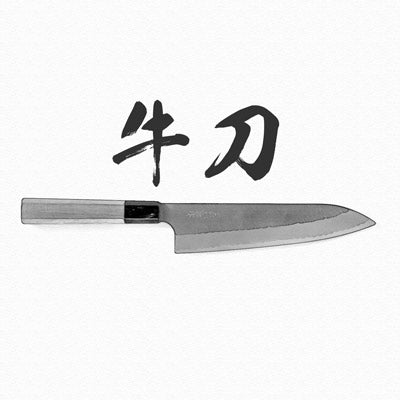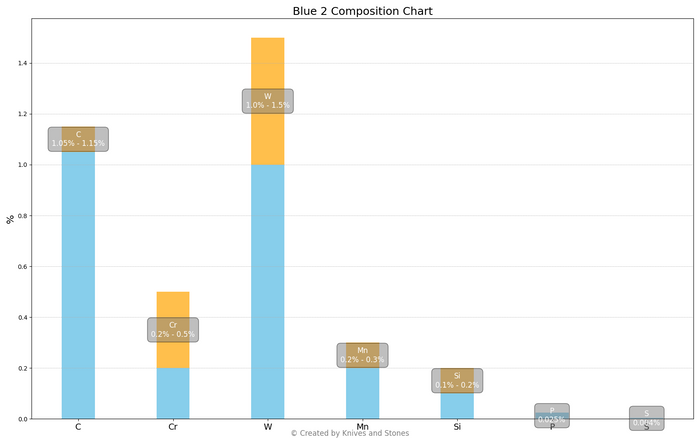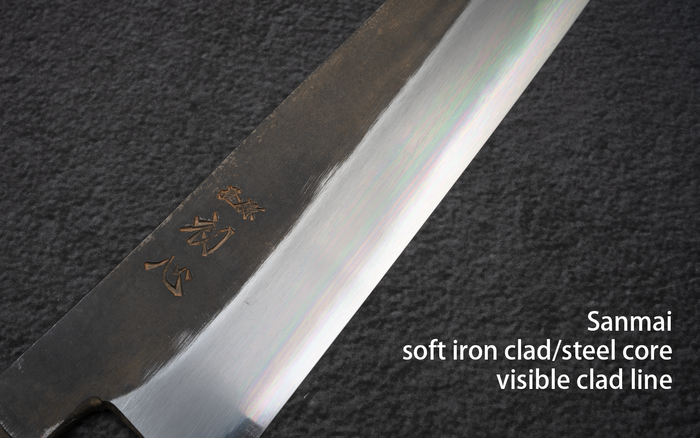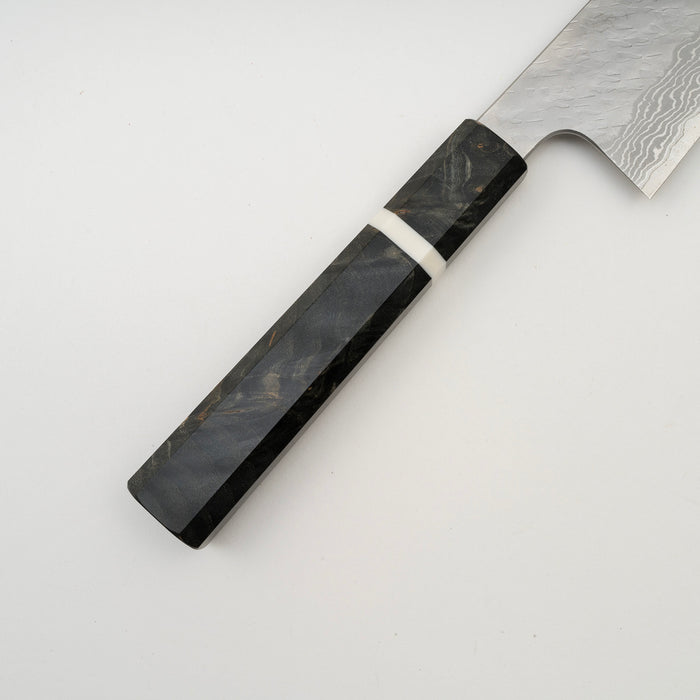Mazaki | SKU:
MAZA_B2HONDM_GY21_Y24
Mazaki Blue 2 Hon-Sanmai Damascus Gyuto 210mm Stabilized Birch
$2,100.00
Unit price
/
Unavailable
Tax included
Shipping calculated at checkout.
Mazaki Blue 2 Hon-Sanmai Damascus Gyuto 210mm Stabilized Birch is backordered and will ship as soon as it is back in stock.
Couldn't load pickup availability
Detailed Specifications
| Line | Mazaki White 2 Migaki |
| Profile | Gyuto / Chefs Knife |
| Bevel Type | Double Bevel |
| Weight | 187 g 6.6 oz |
| Edge Length | 217 mm .8.54 inch |
| Heel Height | 51 mm .2.01 inch |
| Width @ Spine | 5.0 mm 0.2 inch |
| Width @ Mid | 2.5 mm 0.1 inch |
| Width @ 1cm from Tip | 0.7 mm 0.03 inch |
| Steel | Blue 2 / Aogami #2 | Carbon |
| Blade Construction | Sanmai - Soft Iron Clad |
| Hardness (HRC) | 61 - 63 |
| Surface Finish | Migaki |
| Handle | Octagonal Birch Burl with Spacer |
| Region | Sanjo |
| Best for |
|

| Pros | Cons |
|
|
|
Care Instruction
- Don't cut hard things! Japanese knives are brittle so bone hacking is a NO NO!
- Wash with netural detergent after use, and wipe dry;
- Please don't wash knife with dishwasher, it will damage the wood handle;
- Be careful not to leave the knife close to a heat source for a long time;
- It is a lot more dangerous to cut with a blunt knife than a sharp knife!
- It is best to sharpen a Japanese knife regularly on a waterstone.
- Oil the (carbon) knife if storing for an extended period of time to prevent rust.



























